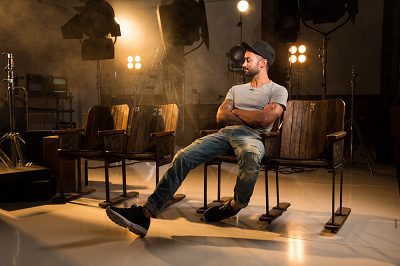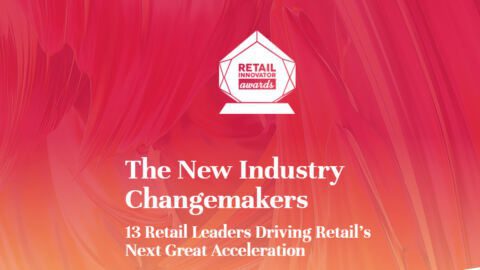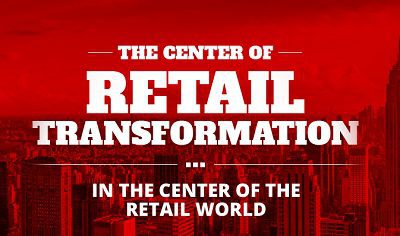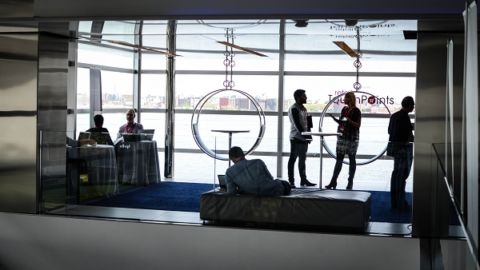“Creative instability is an epidemic in retail right now,” according to Angelo D’Agostino, former VP of Brand Marketing for Wet Seal, which closed all its brick-and-mortar stores earlier in 2017. D’Agostino recently reunited with Live Nation as Creative Director, after receiving a 2017 Retail Innovator Award for his work at Wet Seal.
In this exclusive Q&A, D’Agostino shares his passion for creative leadership in retail and other businesses.
Retail TouchPoints (RTP): Why did you decide not to pursue another career in retail right now, after Wet Seal?
Angelo D’Agostino: I was approached by Live Nation prior to Wet Seal’s shuttering and the decision to leave was a balanced but bittersweet move. For me, the jump out of fashion seems more like a “fight or flight” response given the fragile state of the retail landscape. Marketing/creative teams are the first casualties of a trending retail downturn — I’m not out of the game, but I’m definitely on a sidelined hiatus.
RTP: How do you propose retail companies adapt and embrace a new digital, creative way of thinking?
D’Agostino: Retail executives must be willing to objectively peel back the layers of how consumers interact and engage with our brands to begin to tackle today’s business challenges. No matter the age or demographic — if you can arrive at a level of understanding with your customer and teach your marketing and creative teams to speak that language, you’ve won.
We can’t operate under the antiquated assumption that the person who is thought to be the “smartest” is the best person to be making decisions. Our employees are usually running circles around us, intuitively aware of the changes and updates to programs, social media algorithms and information trends well before we are. We need to empower them to use that information to help lead the business forward. I’ve never met an Executive Team that wholly understands the role of Marketing or Creative leadership, and I think that’s because traditionally there’s a gap between ROI contribution and building equity in brand affinity.
I refer to myself as a “Brandvocate” because my aim is to push the brand forward, always the brand first. If you understand your brand and can help others to see who and what you represent, your creative thinking will become a lot more valuable. Ideation is an art, it’s not a science — there is no recipe book to building a brand. The nature of digital commerce demands that you know, or aggressively seek out your customer — not the other way around. I think that might be the biggest lesson, that the Internet is not a mall…you can’t survive on clever windows and loud signage to stand out. Like any good relationship — if you can keep a running dialogue between the brand and the customer, you’re doing something right. Also, we have got to start striking “Millennial” marketing from our lexicon — that group is aging up and aging out – and we should be focused more on Gen Z — they are going to dictate the future of retail.
RTP: How should businesses focus on creative leadership?
D’Agostino: Retail executives should reinforce, from a corporate perspective, the many reasons why creative functions add value to a business. If you treat your creative teams like a service area, like a mechanic’s shop, all you’ll get from work output is whatever problem can be diagnosed at the time. You’re not fostering new, innovative ideas if you’re just spending the day treating the symptoms of a business and not daring to look for a cure. We are in a time where we have unimaginable depths of data and insight that we can use to fuel and inform our creative decisions, but people need to know that those areas, those creative folks in the building aren’t just daydreaming away payroll — they’re adding to the success of the business as a whole. I also think it’s important for creative teams to have real-time experience in the field. Store trips, set-ups, floor-sets, window installations etc. I never ask anyone to do anything that I’m not willing to do myself — that’s something that I try to instill in my teams. “Oh, you haven’t hung a window banner or changed a mannequin or repositioned a focus light in a store? C’mon, let’s go!”
RTP: What if certain employees do not embrace this new way of thinking?
D’Agostino: It’s either progress or regress. If you don’t have the ability to open up your mind wide enough to embrace a new way of thinking you’re in for a rough ride – both in life and in business. I think objectivity is key. You have to be able to separate your own bias from that of the work that you do. The most successful brand strategists aren’t ones that are necessarily living the brand — but those that can articulate, or represent, a lifestyle in the work that resonates authentically with the consumer.
I had a language arts teacher that once stopped class and made all of us students stand on our chairs. We had been in the middle of a conversation about a poem that seemed to have everyone stumped in terms of its meaning. “Can anyone tell me why we’re all standing on our chairs? Can anyone tell me why this might help you better understand the poem?” our teacher asked. We looked around at one another in a befuddled silence, until shyly, a girl raised her hand in the back of the room, “Maybe so we could think of it from a different point of view?” Yes. That was the lesson. Sometimes you need to change your perspective in order to gain a level of understanding. Which is why you’ll sometimes see me standing on a desk.
RTP: How important is influencer marketing today?
D’Agostino: This may be a controversial answer, because I do believe in the power of strategically placed or positioned influencer marketing, but I believe the days of paying extortionate amounts of money to someone with three million Instagram followers is quickly coming to a close. It’s not sustainable, and furthermore, Gen Z’ers aren’t buying the ‘b s’. If an influencer isn’t organically advocating for a brand — people sniff that out right away. If you’re going to use an influencer make sure you’re asking for all the bells and whistles, diversify the content, do brand activations, do blog interviews, social posts, special photography capsules — stretch those dollars so they make sense. Also, a word to marketers — what matters most is that you work with someone that will help you lasso the spotlight back to YOUR brand. If someone is being difficult or demanding from the start — that’s a peek into what you’ll be dealing with moving forward. Set your brand up to become an influencer, hire guest curators — organize content or stories that matter for your customer and treat it as if you were programming a tv channel, keep it fast, current and on air!
RTP: How did you get involved in the retail industry initially?
D’Agostino: I fell into retail after getting a part-time job at a department store as a holiday “trimmer” in college – what started out as pocket money, accidentally became a career!
RTP: Who have been your business mentors over the years?
D’Agostino: I have had the great privilege to have worked with some dynamic leaders and mentors all over the world. Early in my career, John Hauser (Chief Officer of Retail Stores for Urban Outfitters) and Jeff Fisher (VP Entertainment Retail Enterprises and Sr. Director of Store Experience at Luxottica Retail) both taught me the power of patience and prioritization. The person that I credit for my success is Greg Gemette (President & CCO at Adoc) who has become both a business mentor and a life coach. Over the years I’ve seen Greg transform businesses all over the world with a careful, but precise hand. He has been there to encourage and push me out of my comfort zone time and time again. I’ve learned from Greg that trust and respect is as much given as it’s earned and that if you can empower and inspire people, you’ll never run out of ideas.
RTP: Can you share some advice for up-and-coming retail executives?
D’Agostino: The strongest advice I can offer to young or up-and-coming execs is to step away from e-mails and texts and connect with your teams. Phones down, eyes up — take the time to solicit feedback and create a sense of unity with your team. Don’t be afraid to jump in — whether that’s social media, or PR or e-Commerce — the more you communicate with your teams on a human level – the more human the work becomes.













